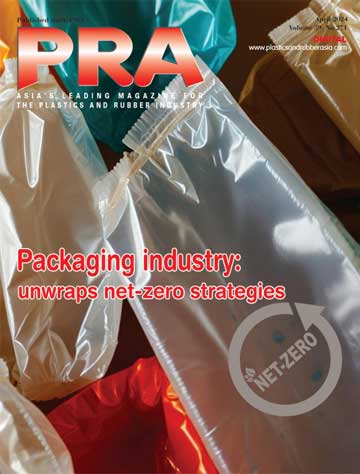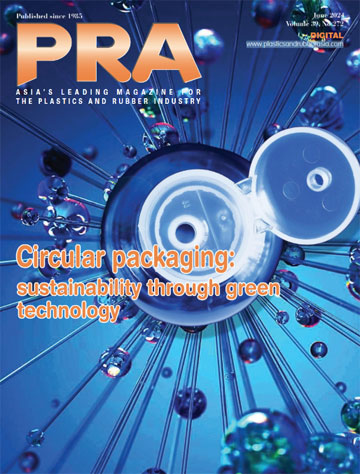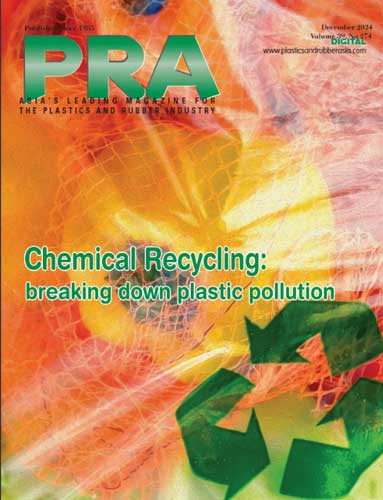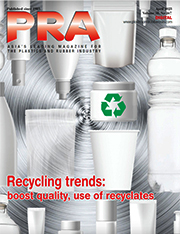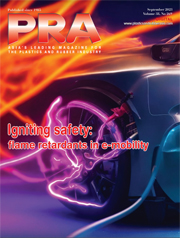Masterbatches; Halogen-free FR solutions: overcoming the volatile antimony market
With the antimony trioxide market racking up high prices and China in the control reins of the supply chain, it may be time to switch to halogen-free flame retardants, says Swiss chemical firm Clariant in this article.
In today's interconnected manufacturing world, supply chain disruptions can have a devastating effect on entire industries. The current antimony trioxide market represents exactly such a scenario – creating both challenges and opportunities for innovation.
As manufacturers face rapidly increasing costs and uncertain availability of this flame retardant (FR) synergist, the search for alternatives has become increasingly urgent.
The antimony trioxide supply chain challenge
The numbers tell a worrying story. Antimony trioxide prices have increased 400% in the past year alone. According to Fastmarkets data from July 2024, the market experienced "the sharpest price rally ever recorded in the antimony market" since they began tracking prices in the early 1980s. More recent market reports indicate prices reaching US$51,500 per tonne in early 2025, creating significant cost pressures for manufacturers relying on this material.
What's driving this price volatility? The answer lies primarily in supply concentration. Approximately 75-80% of global antimony trioxide production is concentrated in China, creating a vulnerable supply chain. Environmental inspections in key antimony production regions like Hunan province have led to production suspensions. Simultaneously, depleting mine reserves and quality issues further constrain output.
Another issue are China’s export controls on various critical minerals, including germanium, gallium and antimony. Antimony is considered a strategic metal for its use in FRs, batteries, semiconductors, and defence applications, with increasing global demand.
The controls require exporters to apply for licenses before shipping antimony products abroad. The restrictions are part of a broader strategy to control critical minerals, citing national security concerns. These actions led to market impacts including price volatility and supply chain disruptions as countries seek alternative sources.
Wide reaching impact of antimony price increases
The effects of this supply chain disruption extend across many industries. The impact is significant for all manufacturers using brominated FRs formulated with antimony trioxide: a combination commonly employed in plastics for electronics, transportation components, and building materials.
First, there's the direct cost increase. Antimony trioxide typically constitutes between 2-4% of flameretarded plastic formulations when used as a synergist with brominated compounds. With prices quadrupling, this translates to considerable increases in production costs that either squeeze margins or force price increases downstream.
Second, is the uncertainty in material availability. Production planning becomes challenging when a critical input faces such volatility. Manufacturers must either secure larger inventories (tying up capital) or risk production interruptions.
These pressures are particularly noticeable in electronics manufacturing, automotive applications, and construction materials – sectors where flame retardancy requirements are non-negotiable for safety and regulatory compliance.
Phosphorus-based advantage
Phosphorus-based FRs offer an alternative path forward. For example, Exolit OP, invented and patented by Swiss chemical firm Clariant, represents a halogenfree solution that addresses both immediate supply chain concerns and offers specific additional benefits.
These FRs have found widespread use in engineering plastics like polyamides and polyesters as well as e.g. some expoy-based thermoset applications. They are available globally, through Clariant’s production sites in Germany and China.
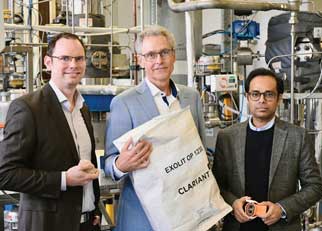
"The current antimony trioxide market volatility presents manufacturers with both a challenge and an opportunity," says Adrian Beard, Marketing & Advocacy Flame Retardants, Additives. "Addressing immediate supply chain concerns will encourage companies to switch to phosphorus-based technologies that also offer improved environmental benefits alongside excellent flame retardant performance. This isn't just about solving today's problem it is about implementing a more resilient approach for the future."
Unlike traditional systems that rely on the brominated FR/antimony trioxide combination, Exolit OP works through a different flame retardancy mechanism. In addition to gas-phase action impeding the chemical reactions in the flame zone, the phosphorus-based chemistry creates a protective char layer during combustion, effectively isolating the underlying material from oxygen and heat. This approach has received validation through independent research.
The European Union's ENFIRO project (Life Cycle Assessment of Environmentally Compatible Flame Retardants), which involved 12 research partners examining 15 commercially available non-halogenated FRs, found that halogen-free options like Exolit OP “offer similar fire performance and technical application capabilities as BFRs [brominated flame retardants] while producing less smoke and less undesirable components in smoke."
Sustainability benefits
While immediate cost and availability concerns might drive initial interest in alternatives, the environmental profile of phosphorus-based FRs offers additional benefits.

A February 2024 life cycle assessment published by researchers at the Fraunhofer Institute for Environmental, Safety, and Energy Technology UMSICHT compared phosphinate-based FRs with brominated alternatives. The study, titled "Toward Sustainable Fire Safety: Life Cycle Assessment of Phosphinate-Based and Brominated Flame Retardants in E-Mobility and Electronic Devices," found measurable environmental advantages for the phosphorus-based approach.
Being phosphorus-based and halogen-free, Exolit OP represents an environmentally improved option compared to legacy brominated FRs. This becomes increasingly relevant as industries face growing regulatory and consumer interest regarding chemical safety and environmental impact.
Testing has shown that phosphorus-based FRs produce less smoke during combustion compared to halogenated alternatives. This characteristic not only reduces the environmental impact of fire incidents but also enhances safety by improving visibility during evacuations.
For manufacturers concerned about long-term material performance, phosphorus-based FRs maintain their effectiveness through recycling processes. Exolit OP retains its flame retardant properties even after multiple mechanical recycling cycles – an increasingly important consideration as circular economy principles gain traction across industries.
Performance advantages
Beyond addressing supply chain vulnerabilities and specific environmental benefits, phosphorus-based FRs deliver performance advantages that make them an excellent choice regardless of antimony market conditions.
Exolit OP FRs typically require lower dosage levels compared to brominated systems with antimony trioxide. In addition, the density advantage is particularly noteworthy. Phosphorus-based FRs have a lower specific gravity than bromine/ antimony-containing systems, contributing to lighter weight parts without sacrificing flame protection.
Time to switch to halogen-free FRs
The current antimony trioxide market presents both immediate challenges and an opportunity to re-evaluate FR strategies. By considering phosphorus-based alternatives, manufacturers can address pressing cost and availability concerns with products that also offer environmental and performance improvements.
This approach aligns with broader industry trends. Interest in FR solutions with improved environmental benefits continues to develop, influenced by industry trends such as miniaturisation in electronics and electrical applications, the ongoing focus on lightweight materials in automotive and changing mobility requirements.
Implementation considerations
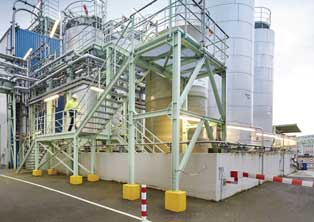
For manufacturers considering a transition away from antimony-dependent FR systems, several practical considerations can help ensure a smooth implementation process.
First, it's important to recognise that while phosphorus-based FRs offer excellent performance, they are not direct drop-in replacements. Formulation adjustments are often necessary when implementing new FR systems.
This transition process requires careful evaluation and testing, and benefits significantly from expert technical support to address application-specific requirements.
(PRA)SUBSCRIBE to Get the Latest Updates from PRA Click Here»


